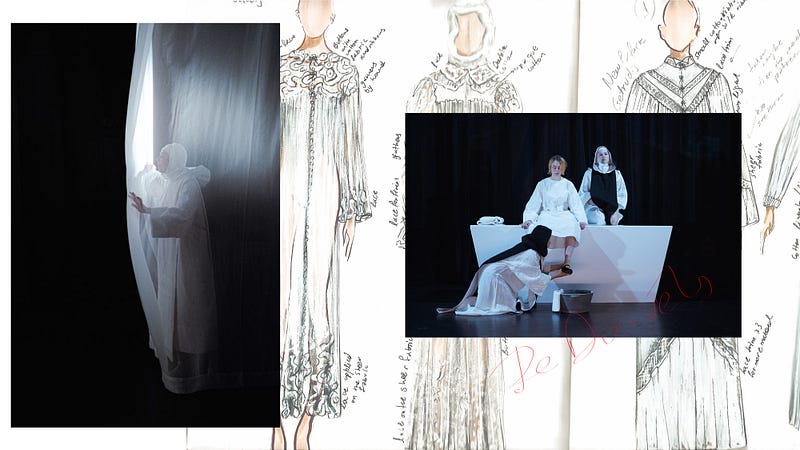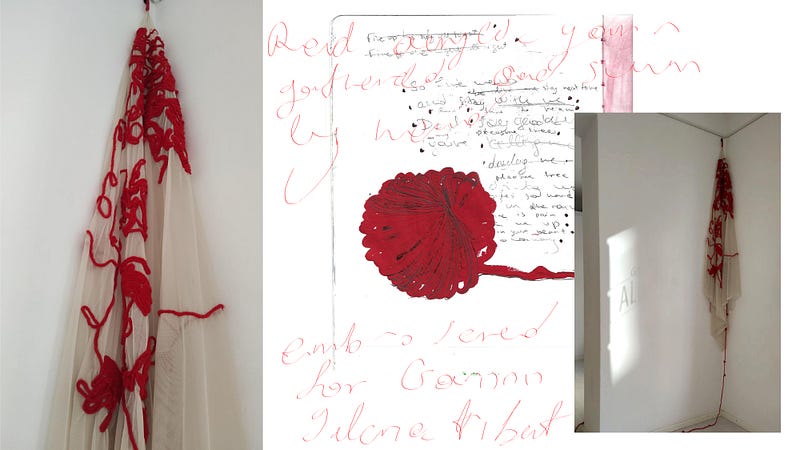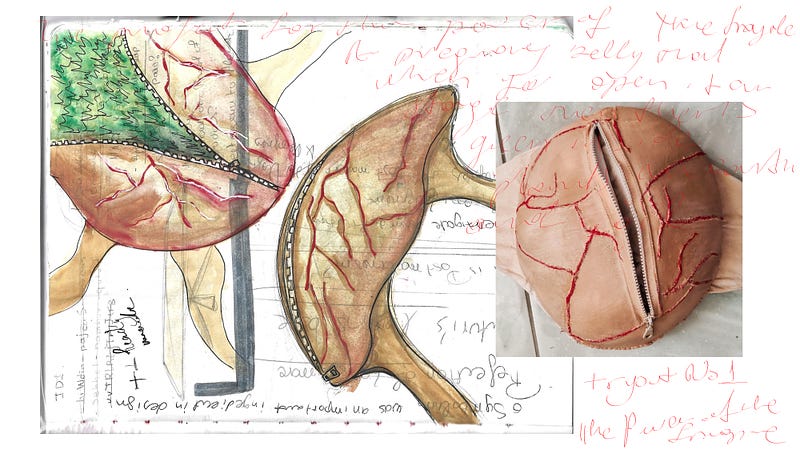26.10.2023
Nicolas Vamvouklis in conversation with Eleni Ellada Damianou
Dance
Nicolas Vamvouklis (NV): It’s remarkable how our paths crossed back in 2009 during that foundation dance course, just before we embarked on our professional journeys. Life took us in different directions for a while, but now, it’s wonderful to see how we’ve both found ourselves in the exciting realm where the worlds of performing and visual arts converge. How have things evolved since then?
Eleni Ellada Damianou (EED): It’s indeed astonishing! Looking back at 2009 feels like a distant memory; everything has undergone a remarkable transformation following years of significant changes. Personally, I’ve embraced a nomadic lifestyle, taking a pause from performing to delve into the world of fashion design. This period of exploration and growth has not only transformed my career trajectory but has also instilled in me a newfound sense of adulthood.
EED: This constant wandering forms the cornerstones of my practice, infusing it with massive inspiration. My art grows upon the unique experiences gained while traveling between these two cities, but I also love exploring new places for future performances and projects. It’s a way to nourish my senses with diverse images, ideas, and colors distinct from the ones I encounter in my usual surroundings. For instance, my recent journey to Tirana and Sarajevo stands out as a vivid case; I was immersed in a collage of architectural styles and visual landscapes, further fueling my creativity.
NV: Having also experienced life across different European regions, I’ve noticed that fostering collaboration between individuals from diverse cultural backgrounds and fields can be quite challenging in Greece. Could you elaborate on this observation and share your perspective on what collaboration means to you?
EED: Your observation resonates with my own experiences in different European locations. While Greece’s historical and artistic legacy might naturally lend itself to cross-disciplinary synergy, the reality of bringing diverse fields together poses challenges. I think Athens has an intuitive potential for unexpected collaborations. While I’ve encountered more active forms of this coming together / teamwork / collective spirit abroad, it’s not to say that this is absent here. In fact, I believe that each artistic community cultivates its creativity hubs in intriguing ways while reflecting its distinct interests and dynamics. As far as I am concerned, I seek to collaborate with people I admire. I reach out to them, expressing my appreciation for their work, and when the opportunity arises, I endeavor to create meaningful partnerships. It’s honestly a rewarding process.

NV: Would you be willing to recount some anecdotes or experiences from your collaborative endeavors with dance companies?
EED: Rather than a specific story, it’s a person who has truly inspired me. Over six years, I had the privilege of working with Radouan Mriziga on various projects. This experience broadened my perspective by seeing the potential in all the spaces I inhabited. Considering my interior architecture background, Radouan’s impressive blend of architecture and performance resonated deeply with me. He influenced me to explore beyond the surface, going deeper into the meaning of things rather than merely performing a dance routine.
NV: I’ve come across information indicating that you’ve developed your unique approach to choreographic composition and body exploration centered around improvisation. Can you provide more insights into this innovative method you’ve created?
EED: During my final year of studies, I dedicated time to comprehend the fundamental movements of each body part — muscles and bones — and the body’s capacity to bend, twist, and expand. I termed this approach “body engineering.” Its core principle is that movement should emerge as a necessary outcome without extraneous embellishments.
After establishing a vocabulary of tasks, the next step was to infuse a sense of purpose into movement within space. This revelation unfolded after my first year collaborating with Radouan. The initiation of the movement stems from the invisible lines that inherently exist within every environment.

NV: I’d love to learn more about your role in costume and set design. Could you share the journey that led you in this creative direction?
EED: I come from a family of craftsmen, and design was always my sanctuary. After an injury in 2018, I decided to scale back my performances and explore alternative paths in case my body didn’t respond accordingly. This led me to painting, where I rediscovered my appreciation for the human form and its movement. Passion for fashion came naturally, an interest I had harbored for a while.
During the pandemic, I seized the opportunity to study fashion design while actively engaging in costume design projects. Leveraging my existing dance network, more and more people started contacting me to craft their costumes. This sequence of events unfolded organically, leading me to projects across scenography, costume design, prop creation, and construction. Interestingly, this path also guided me to visual arts, as my textile work caught the attention of other professionals and colleagues.
NV: Given your profound understanding of the body’s movement, I’m curious to know how this expertise informs your approach to fashion design. Are there specific materials or techniques that you are currently exploring or experimenting with in your work?
EED: Understanding the intricacies of body movement is a significant advantage in my work. This goes beyond just movement knowledge; it extends to grasping the comfort required during motion. For example, dancers often prefer the ease of their pyjamas during rehearsals. Imagine the challenge of executing these very same movements in jeans or rigid fabrics lacking flexibility… At the moment, I am experimenting with repetition and crafting garments that blur the line between wearable pieces and sculptural art.

NV: Which fashion designers do you particularly admire?
EED: Martin Margiela and Alexander McQueen, along with Daniel Roseberry and Vivienne Westwood.
NV: Eleni Ellada, I’m interested in hearing about your upcoming plans and any new projects you’re currently involved in.
EED: The upcoming months will be pretty exciting. I’m committed to a scenography project and will present a textile piece in a group exhibition in Athens this October. Moreover, I intend to spend some time in Helsinki, launching a new collaboration with an old friend and colleague. Once everything aligns smoothly with our plan, I’ll announce more about the exact locations and dates.
Eleni Ellada Damianou began her dance journey at the National School of Dance in Athens in 2010. After graduating from P.A.R.T.S. in Brussels in 2016 and École des Sables in Senegal, she collaborated with renowned choreographers and international festivals such as Alkantara and Kunstenfestivaldesarts. Residencies at PACT Zollverein, Saaren Kartano, and Les Brigittines also enriched her creative path. Damianou communicates her perception of movement by teaching improvisation, composition, and dramaturgy. As a fashion designer, she creates dance, theater, and stage costumes, as well as set designs. In 2022, she was awarded the Stavros Niarchos Foundation (SNF) Artist Fellowship by ARTWORKS.
Nicolas Vamvouklis is a curator and arts writer. He is the artistic director of K-Gold Temporary Gallery and has curated exhibitions at Mediterranea 19 Biennale, 7th Thessaloniki Biennale, and Fondazione Sandretto Re Rebaudengo. Since 2016, he has served as senior curator at the Benetton cultural panorama. He has also collaborated with Béjart Ballet Lausanne, Marina Abramovic Institute, Prague Quadrennial, and Triennale Milano. Vamvouklis contributes to art magazines and publications, including The Art Newspaper and MIT Press. In 2021, he was awarded the Stavros Niarchos Foundation (SNF) Artist Fellowship by ARTWORKS.



